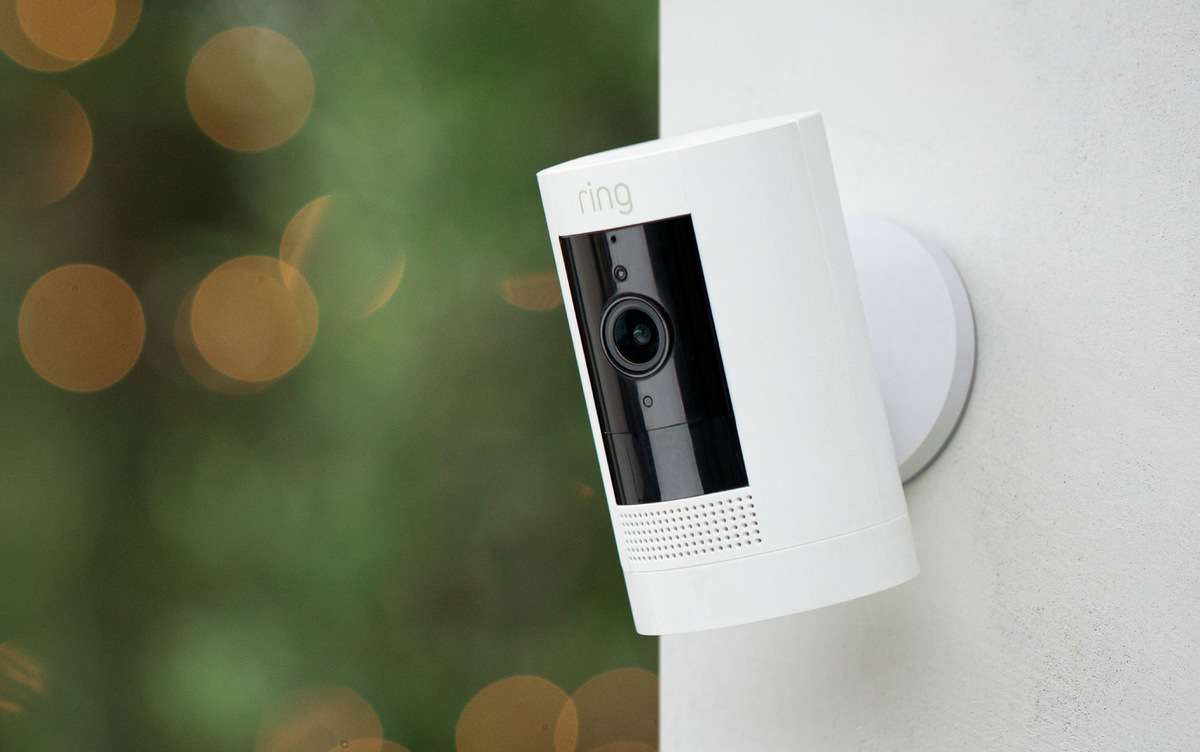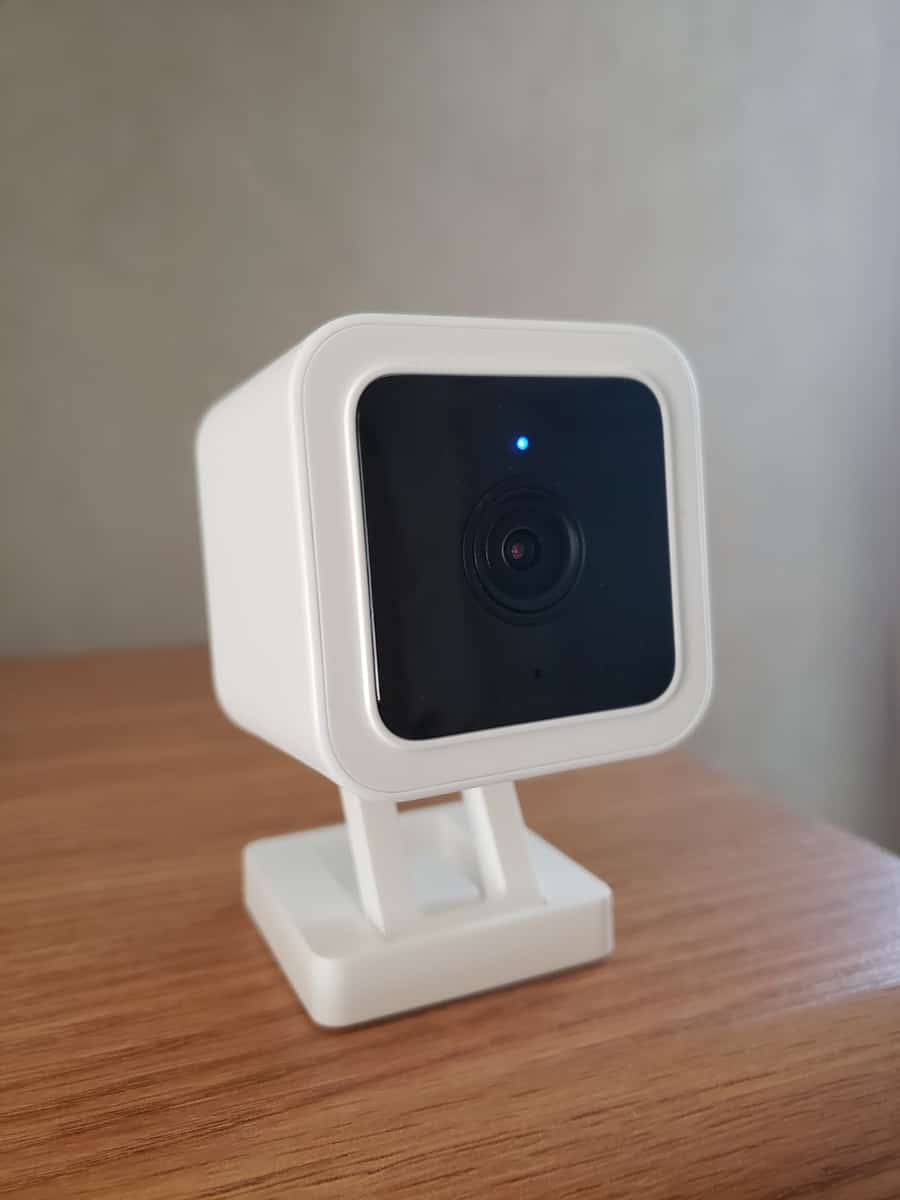Our Ring cameras and Ring doorbells are vital parts of our home security. So it stands to reason that when we view our smart camera footage, one of the most important factors is that we can actually decipher what we’re looking at. It makes all the difference to know whether we’re looking at a person – or a really funky bush. This is where FPS, or Frames per Second come into play.
The frame rate of your smart camera footage is important, and can either help, or hinder your efforts at keeping your home secure. So what exactly is the FPS for your Ring cameras and doorbells, and why does it matter so much?
What Are Ring Cameras and Ring Doorbells?
Ring’s smart cameras and doorbells are a big part of their line of smart devices designed to help keep your home safe. Their products include the wired Indoor Cam, as well as the versatile, battery-powered Indoor/Outdoor cam able to withstand even harsh outdoor conditions.

They even have Floodlight Cams to better illuminate any potentially nefarious activity around your home.
One of Ring’s best-selling items, the Ring Video Doorbell Camera, is a convenient and modern alternative to traditional doorbells. These video doorbells allow you to see and hear anyone that comes to your door, without you having to actually be there. You can even speak to them via the two-way speakers.

In addition to the Ring Video Doorbell versions 1, 2, 3, and 4, there is also the Video Doorbell Pro (1st and 2nd Gen) and the Elite.
Most of Ring’s cameras and doorbells use Wi-Fi to communicate with the Ring application. The only exception is the Ring Video Doorbell Elite and Ring Stick-Up Cam Elite, both of which use PoE, or, Power over Ethernet, to connect to the internet and the Ring application. They do this by means of a wired Ethernet connection that provides not only internet, but power as well, eliminating the need to charge them or replace the battery.
The Ring application is your main hub of control for all of your Ring video doorbell pro, video doorbell pro 2 and other ring device. This is where you set up all of your device’s settings, such as Motion Zones, Detection Sensitivity, as well as when and how to receive Motion Alerts.

The Ring app is also where you view videos of any motion alerts your devices have recorded. These videos can help you determine whether the motion that triggered the alert is nothing – or warrants your attention.
A good frame rate can help make sure you actually catch the source of said motion detection. But what exactly is Ring’s frame rate?
What Is Ring Camera and Doorbell Frames Per Second?
First off, what is a Frame Rate? It’s defined as the speed at which images are shown. It’s expressed as Frames Per Second, or FPS. The higher the frame rate, the better the quality, clarity, and smoothness of your video recordings. You’ll not only be able to see images more clearly, but higher frame rates also mean less choppy, pixelated videos.
Ideally, smart cameras that record from 15 fps and up have a decently good resolution which will allow you to clearly see what’s going on in your videos.

Anything below 15 fps and you run the risk of not clearly seeing objects, especially those that are moving fast. You may also miss important footage as your video clips are more likely to skip around.
There is no one set standard when it comes to frame rates for devices. Different Ring devices have different frame rates, and even these can change due to outside factors such as the time of day and lighting available, along with the quality/speed of the internet connection.

According to Ring, the Ring Floodlight Cam records at about 15 fps. The Ring Floodlight Cam Plus, however, takes it up a notch and records at a smoother 25 fps. The Ring Stick Up Cam Elite takes it up even further, recording at about 30 fps.
And what of Ring’s best-selling Video Doorbells? Many may be surprised to find out that these typically record on the lower end of the frame rate spectrum. The average for the Video Doorbells, as well as the Indoor and Outdoor cams, is about 15 fps.
There can be benefits to lower frame rates, however. Recording at a lower frame rate allows the video to be clear without sacrificing storage. Lower frame rates allow for better storage – though sometimes the video may appear choppy, especially when objects are moving fast such as cars.
Reasons for a Low Frame Rate – And How to Fix It
When viewing your motion alert videos you may notice that some are choppy, the footage seem to jump around, or it just looks downright unclear. This may be due to a sub-par frame rate, usually below 15 fps. There are a few reasons why your Ring devices may exhibit a low frame rate. One may be due to the speed of your internet connection.
Slow internet connections can negatively impact frame rates. Strong connections are essential in order to sustain higher frame rates. So how do you solve this? One solution involves upgrading your internet bandwidth. If your home Wi-Fi router has multiple devices connecting to it, the bandwidth may be spread thin, leaving less for your smart cameras. Spreading, say, 1000 mbps over several devices will give better speeds than spreading 600 mbps.
Another fix for slower internet is changing the channel your Wi-Fi is using. When it comes to the 2.4 GHz band of Wi-Fi, the best channels are 1, 6, and 11, as they are the only ones not overlapping with other channels. This gives you less interference and a better flow of speed for your devices.
If your internet bandwidth isn’t the culprit, the device itself may have limitations. The hardware, especially of older camera versions, may not be up to speed and only able to record up to a certain frame rate. When in doubt, try contacting Ring.
At times, the picture quality selected can also determine what the frame rate for your devices is. Some Ring devices equipped with HDR Recording, such as the Ring Doorbell, 2, 3, and 3 Plus. Some users report that when this feature is enabled, their frame rate drops below 15 fps.
This could be due in part to the fact that the camera is combing frames, thereby causing the frame rate to suffer. The hopes is that HDR will improve picture quality, but that doesn’t always end up being the case, and many users end up going without it.
Frame Rates Of Other Smart Home Cameras
Now that we’ve covered what Frame Rates you can expect from Ring, how do other brands of smart home cameras compare?
When it comes to Wyze, for example, their cameras’ frame rates are somewhat similar to many Ring cameras.

The Wyze Cam v2 comes in at about 15 fps for daytime, and 10 fps for nighttime – much like the Ring Indoor camera and Video Doorbells. One of their newest indoor cameras, the Wyze Cam v3, however, takes it up a notch with daytime frame rates at about 20 fps, while the nighttime with infrared lights are about 15 fps. Even though there is only a slight difference in frame rate, there is a noticeable improved clarity with the v3.
Eufy also has a frame rate similar to those of Ring and Wyze.

Their Indoor 2K Pan and Tilt camera both average out at about 15 fps, as does the Eufy Cam 2C. However, when set to HomeKit Secure Video (HKSV for short), the frame rate jumps to 24 fps. Unfortunately, this also drains the battery faster. The Eufy Video Doorbell records at a smooth 20 – 30 fps, giving it one of the best frame rates among smart cameras on the market.
Arlo smart home cameras, on the other hand, boast a slightly higher frame rate of 24 fps, and the Nest Cam Indoor goes even further, with the ability to achieve frame rates up to 30 fps.
Conclusion: Visual Speed
Getting the best out of your smart camera involves being able to actually see what’s being recorded. This is where the frame rate comes in. Low frame rates can make your videos choppy, and make it difficult for you to see any would-be suspects on your property.
Sometimes the low frame rate is due to a spotty Wi-Fi connection, but it can also be due to the limitations of the specific device. Fortunately, even with frame rates averaging out at about 15 – 20 fps, Ring cameras and doorbells still provide clear video so that you can continue to keep your home safe.





